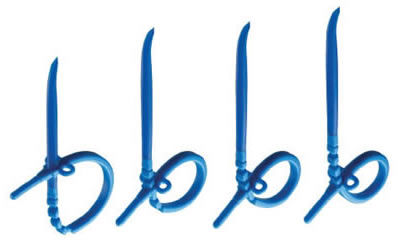Banding the sleeve to prevent weight regain
- Owen Haskins
- Aug 26, 2014
- 3 min read
Laparoscopic sleeve gastrectomy is a safe and effective procedure that results in weight loss and improvements in comorbidities. Nevertheless, some patients do present with insufficient weight loss or weight regain once the initial impact and effectiveness of their LSG procedure has subsided.

Professor Konrad Karcz, University of Lübeck, Germany, believes one solution to prevent failure is to employ the MiniMizer Ring (Bariatric Solutions). In an interview with Bariatric News, he discusses the indications for banded sleeve gastrectomy and the advantages for using the MiniMizer Ring.
“The gastric sleeve is gaining in popularity because it is a short and effective procedure. In the first and second year after surgery the weight loss and metabolic changes, such as resolution of type 2 diabetes, are exactly the same as a gastric bypass,” said Prof. Karcz.
In Germany, the majority of bariatric patients have BMI>45 and more than half of Prof. Karcz’s patients have a BMI>50. In his intuition, it is planned for most patients in the BMI>50 category to have a two-stage procedure: first a sleeve and if their weight loss is unsatisfactory, an additional malabsorption procedure.

“However, if the patient is on medication it is a contraindication to a malabsorption procedure, or patients may not want a second procedure,” he added. “So what do we do with patients who were not losing enough weight due to dilatation of the gastric sleeve, who cannot have a malabsorption procedure."
“We realised we needed to consider additional options, such as the banding sleeve.”
Prof. Karcz and his team currently use the MiniMizer Ring in the primary procedure on super obese patients and perform banded sleeve procedure on those patients who are receiving medication or who are reluctant to have a second procedure.
He explains that the MiniMizer Ring does not really have an impact on weight loss for the first 8-12 months, because the sleeve passage is narrower than the Ring, the device is used as a ‘preventative measure’ against the dilatation, “It is important not to make the Ring too tight at the time of the procedure, as this may cause the Ring to migrate. However, complications such as migration dislocation, infection and dysphagia are rare,” adds Prof. Karcz.
MiniMizer Ring
He said that the design of the MiniMizer Ring has several significant advantages including the ease of placement and closure, and the intra-operative flexibility allowing adjustments to the desired diameter. The procedure is aid by the blunt, silicone covered introduction needle that simplifies retrogastric placement, as this enables the operator to get behind the pouch.

“The MiniMizer Ring is very easy to implant. I make a small incision at the peritoneum on the small curvature so I can work the needle of the ring through, otherwise you may have some resistance and you’ll have to apply more pressure that could be dangerous because of the vessels.” says Prof. Karcz.
The Ring can be tailored to suit several closing positions from the largest to the smallest ring size: from 8.0cm length (approx. 26mm internal diameter), to 7.5cm length (approx. 24mm internal diameter, 7.0cm length (approx. 22mm internal diameter) and 6.5cm length (approx. 20mm internal diameter). This feature also allows for re-opening if the ring is either too tight or too loose.
“The banded sleeve gastrectomy operation is a logical evolution when you need to enhance the restrictive mechanism of the operation” concluded Prof. Karcz. “The MiniMizer Ring is easy-to-use, with a choice of diameters facilitating flexibility and adjustments if needed.”





Comments